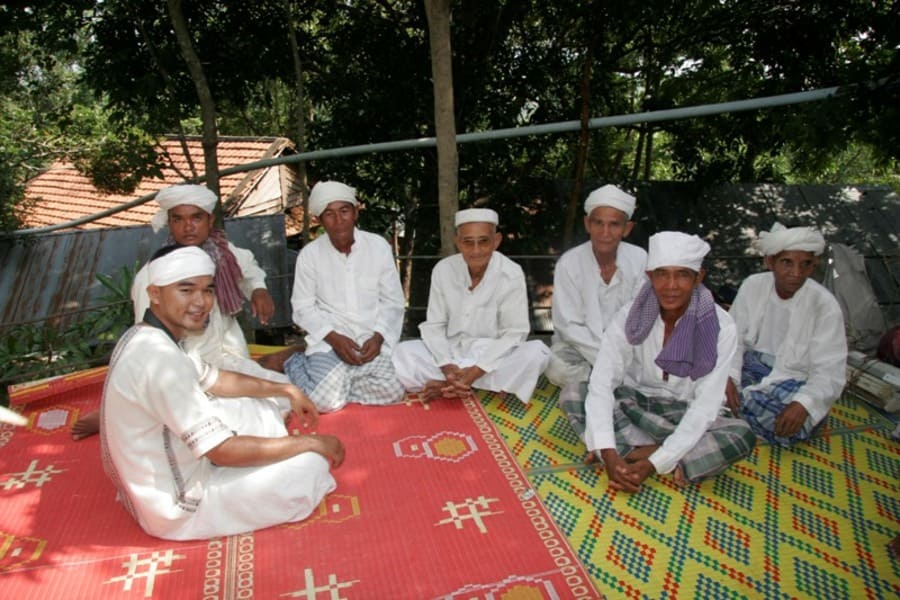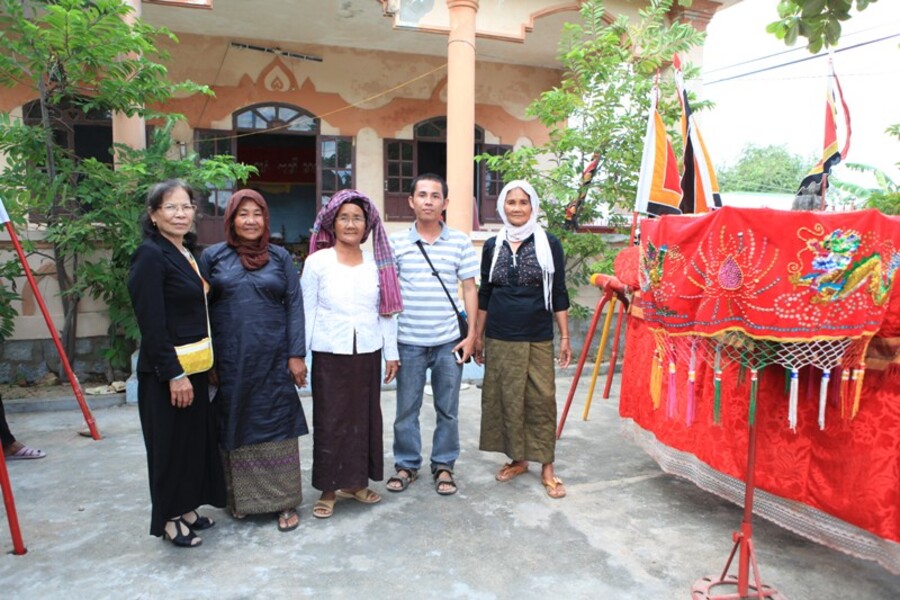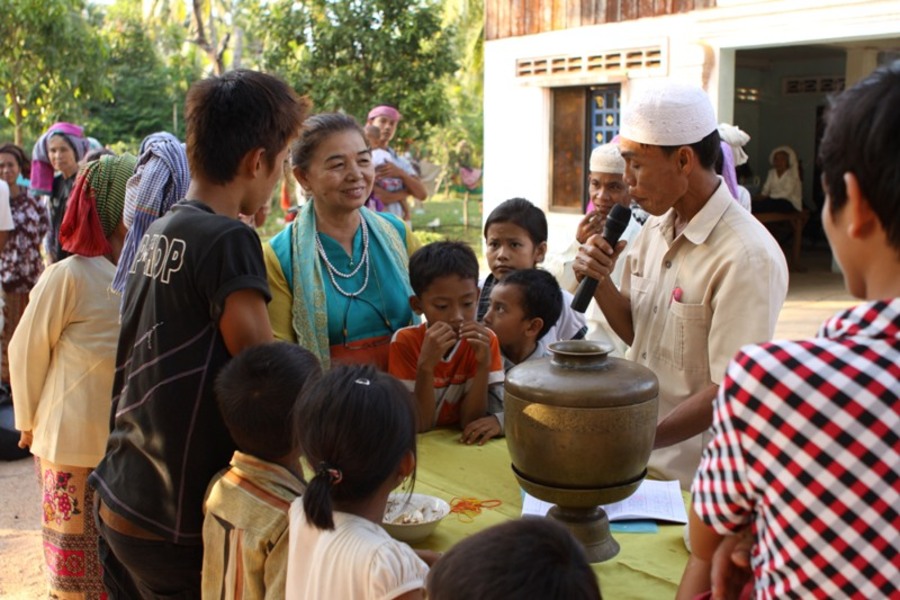Embark on cambodia trips through the captivating history and rich cultural heritage of the Cham people in Cambodia. Nestled along the banks of the Mekong River and Tonle Sap, the Cham community holds a unique place in the tapestry of Cambodia's ethnic diversity. With roots tracing back to the ancient Champa Kingdom of Vietnam, the Cham people bring with them a legacy of resilience, tradition, and cultural richness that has endured through centuries of change and transformation.
Contents
An Overview of the Cham People in Cambodia
The Cham people form one of Cambodia's most distinct ethnic communities, with a rich history and cultural heritage that sets them apart. Originating from the ancient Champa Kingdom in present-day Vietnam, the Cham people migrated to Cambodia centuries ago, settling primarily along the Mekong River and Tonle Sap. Renowned for their adherence to Islam, the Cham have maintained their religious and cultural traditions, contributing to the country's diverse cultural landscape.
The Origins and History of the Cham People in Cambodia
The origins and history of the Cham people in Cambodia trace back to the ancient Champa Kingdom, which flourished in present-day Vietnam from around the 2nd century AD to the 19th century AD. The Cham people are believed to be descendants of the Austronesian-speaking peoples who migrated from the Indonesian archipelago to mainland Southeast Asia.
The Champa Kingdom was a powerful maritime kingdom that controlled a significant portion of the central and southern coast of Vietnam, with its capital located in modern-day Quảng Nam Province. The Cham were known for their advanced civilization, maritime trade networks, and rich cultural heritage, which encompassed Hinduism, Buddhism, and indigenous animist beliefs.
During the expansion of the Khmer Empire in the 9th century AD, the Cham Kingdom came into conflict with the Khmer rulers, leading to territorial disputes and occasional military conflicts. Despite these tensions, the Cham maintained their independence and continued to thrive as a maritime trading power in Southeast Asia.
Over time, however, the Champa Kingdom gradually declined due to internal strife, external pressures from neighboring kingdoms, and the rise of European colonial powers in the region. By the 19th century, the Champa Kingdom had been absorbed into the expanding Vietnamese state, and many Cham people migrated southward to present-day Cambodia, where they settled along the Mekong River and Tonle Sap.
In Cambodia, the Cham people established communities primarily in the provinces of Kampong Cham, Kampong Chhnang, and Tbong Khmum. They brought with them their rich cultural traditions, including their distinctive Islamic faith, architectural styles, and artistic practices.
Today, the Cham people in Cambodia continue to maintain their cultural identity and religious heritage, practicing Islam as their primary faith and preserving their traditional customs and rituals. Despite facing challenges such as socioeconomic disparities and cultural assimilation, the Cham people remain an integral part of Cambodia's diverse ethnic tapestry, contributing to the country's multicultural society and enriching its cultural heritage.
The Culture of the Cham People in Cambodia
The culture of the Cham people in Cambodia is a vibrant tapestry woven with rich traditions, customs, and beliefs that have been passed down through generations. Rooted in their ancient origins in the Champa Kingdom and shaped by centuries of interaction with neighboring cultures, Cham culture is characterized by its distinct Islamic heritage, artistic expressions, and communal traditions. Here are some key aspects of Cham culture in Cambodia:
Islamic Faith
Central to Cham culture is the practice of Islam, which serves as the cornerstone of their religious and spiritual life. Cham communities in Cambodia adhere to Sunni Islam, following the teachings of the Quran and the traditions of Prophet Muhammad. Islamic rituals, prayers, and religious observances play a significant role in daily life, shaping everything from social interactions to family dynamics.
Language and Literature
The Cham people have their own language, known as Cham, which belongs to the Austronesian language family. Cham is traditionally written in an adapted version of the Arabic script known as Cham script. While Cham is primarily an oral language, there is a rich tradition of Cham literature, including epic poems, religious texts, and oral histories passed down through generations.
Cultural Traditions
Cham culture is celebrated through a myriad of cultural traditions, including music, dance, and art. Traditional Cham music features distinctive rhythms and melodies, often accompanied by traditional instruments such as the gong, drum, and flute. Cham dance is characterized by graceful movements and intricate choreography, often performed during religious ceremonies and community celebrations.
Cham cuisine reflects the cultural diversity of the community, drawing influences from both Islamic and Southeast Asian culinary traditions. Staple foods include rice, fish, vegetables, and spices such as turmeric, lemongrass, and ginger. Popular dishes include bai sach chrouk (grilled pork and rice), amok (a savory fish curry), and num ansom (sticky rice cakes wrapped in banana leaves).
Architecture and Art
The architectural and artistic heritage of the Cham people is evident in their mosques, tombs, and religious monuments. Cham architecture is characterized by intricate designs, geometric patterns, and decorative motifs inspired by Islamic art. Traditional Cham crafts such as pottery, weaving, and metalwork also showcase the community's artistic talents and craftsmanship.
Community Life
Cham culture places a strong emphasis on community and solidarity, with tight-knit social networks and mutual support systems within Cham communities. Family ties are paramount, and communal gatherings such as weddings, funerals, and religious festivals are occasions for celebration and unity.
Exploring the rich tapestry of history and culture woven by the Cham people in Cambodia reveals a story of resilience, tradition, and heritage. Through centuries of influence and adaptation, the Cham community has preserved its unique identity, marked by vibrant festivals, intricate architecture, and profound religious practices. As we conclude this journey into the history and culture of the Cham people, it's evident that their contributions have left an indelible mark on Cambodia's cultural landscape.




